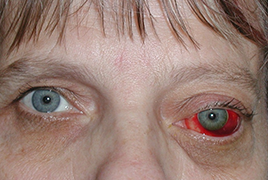Aim: To report an overview of the most frequent tumors of the orbit, suggest diagnostic approach and possible solution according to experience with own cohort of patients.
Material and Methods: From patients’ files from the Department of Ophthalmology and Department of Stomatology, First Medical Faculty, Charles University, and General Faculty Hospital in Prague, Czech Republic, there were selected patients, who underwent the surgery due to the suspicion of malignant development in the orbit during the period 2005 – 2019. From the surgical records we found information about 497 cases. At the Department of Stomatology, there were 282 surgeries under general anesthesia performed, and at the Department of Ophthalmology, there were 215 surgeries, mostly under local anesthesia performed.
Results: The number of surgeries in men and women was equal; patients of all ages were present. The median of patients’ age operated on at the Department of Stomatology was 53 years, and at the Department of Ophthalmology 63 years. The most common primary benign tumor was the cavernous hemangioma (9 %), the most common non-tumorous expansion was the dermoid cyst (7 %); the most common malignant tumor was the lymphoma (17.5 %). The last mentioned tumor was the most common diagnosis in the whole cohort as well.
Conclusion: Our cohort of patients is comparable with large cohorts published in the literature concerning age and gender distributions. Differences in frequencies of some lesions may be explained by that our cohort includes patients after the surgery only. The malignant lymphoma is the most common diagnosis indicated to surgical procedure, mostly biopsy. Comparing the two cohorts from our departments 20 years apart, the malignant lymphoma remains the most common indication for surgery, but the incidence of adenomas and adenocarcinomas of the lacrimal gland decreased. It is not the goal of this paper to evaluate all possible orbital affections. Suggested surgical approaches are just recommendations according to years of experience; however, in some situations, to choose an individual surgical approach is necessary.

